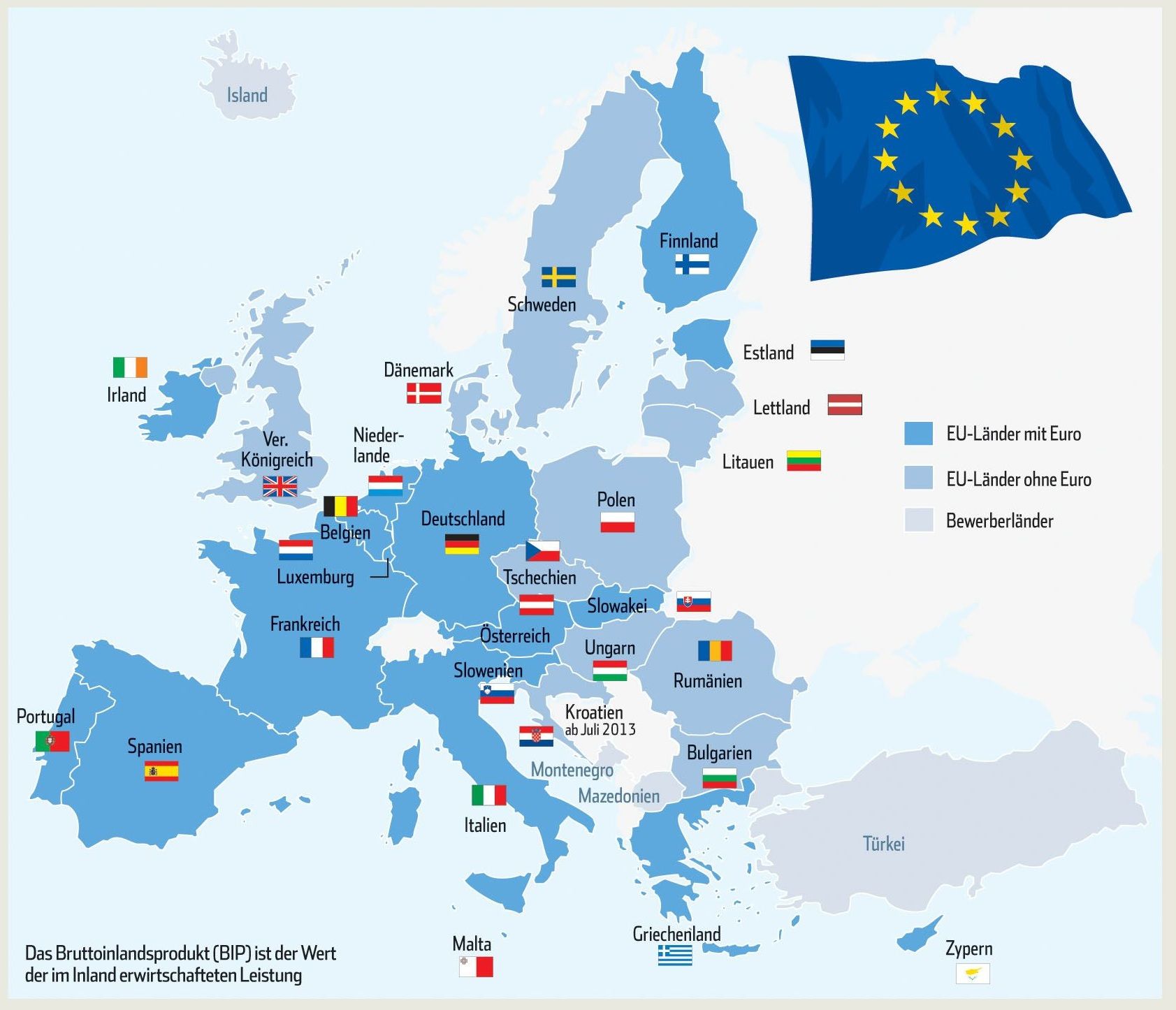
漢德百科全書 | 汉德百科全书

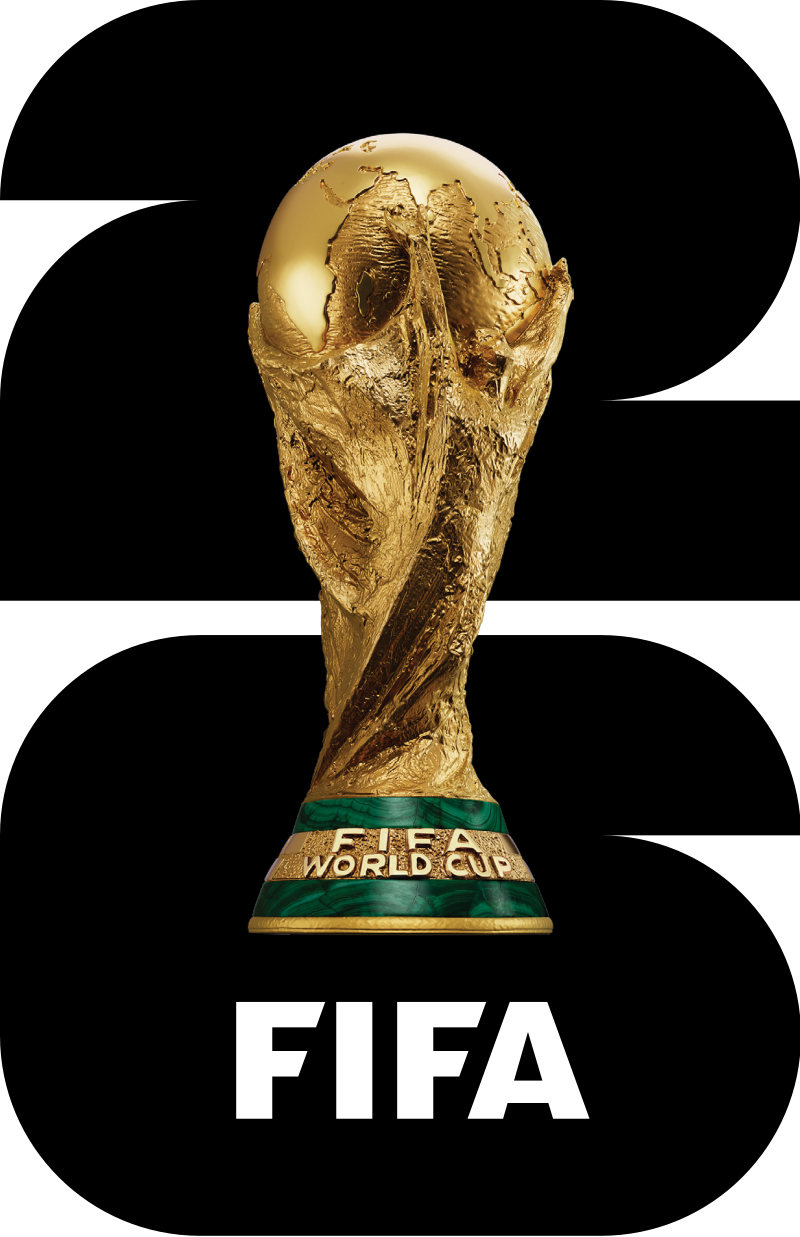 FIFA Fussball-Weltmeisterschaft 2026
FIFA Fussball-Weltmeisterschaft 2026

 Financial
Financial
 ***Global Financial Center
***Global Financial Center

 History
History
 N 2000 - 2100 AD
N 2000 - 2100 AD

 History
History
 M 1500 - 2000 AD
M 1500 - 2000 AD

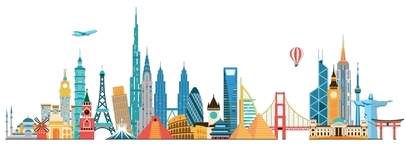 International cities
International cities
 ***Global Urban Economic Competitiveness
***Global Urban Economic Competitiveness

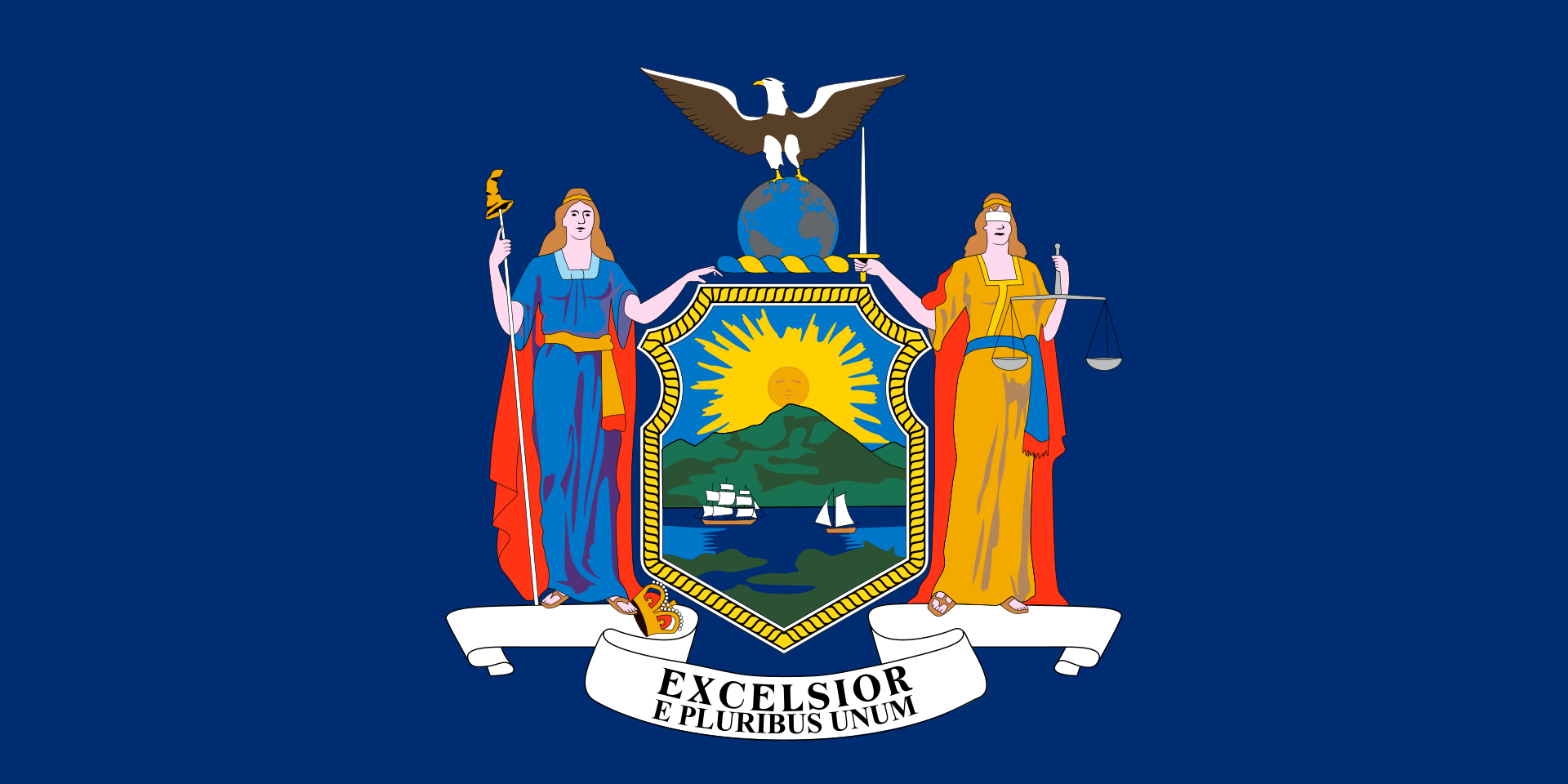 New York-NY
New York-NY
 United States
United States

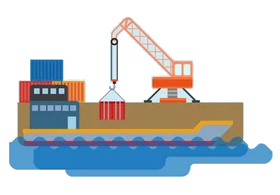 Important port
Important port

New York City (AE: [nuːˈjɔɹk ˈsɪɾi], kurz: New York, deutsch veraltet: Neuyork,[1] Abk.: NYC) ist eine Weltstadt an der Ostküste der Vereinigten Staaten. Sie liegt im Bundesstaat New York und ist mit rund 8,5 Millionen Einwohnern die bevölkerungsreichste Stadt der Vereinigten Staaten.[2]
Die Metropolregion New York mit 18,9 Mio. Einwohnern[3] ist einer der bedeutendsten Wirtschaftsräume und Handelsplätze der Welt, Sitz vieler internationaler Konzerne und Organisationen wie der Vereinten Nationen sowie wichtiger See- und Binnenhafen an der amerikanischen Ostküste und dem Hudson. Die Stadt genießt mit ihrer großen Anzahl an Sehenswürdigkeiten, den 500 Galerien, etwa 200 Museen, mehr als 150 Theatern und mehr als 18.000 Restaurants Weltruf auch in den Bereichen Kunst und Kultur und verzeichnet jedes Jahr etwa 50 Mio. Besucher, davon knapp 12 Mio. aus dem Ausland.[4][5] Laut Forbes Magazine ist New York City die Stadt mit den höchsten Lebenshaltungskosten in den Vereinigten Staaten sowie eine der teuersten Städte weltweit.[6]
Nachdem 1524 Giovanni da Verrazano und 1609 Henry Hudson die Gegend des heutigen New Yorks erforscht hatten, siedelten ab 1610 niederländische Kaufleute an der Südspitze der Insel Manna-Hatta und bald darauf an der Westspitze von Long Island, dem heutigen Brooklyn. Erst 1626 kaufte Peter Minuit den Einheimischen, wahrscheinlich Lenni-Lenape-Indianern, die Insel „Manna-hatta“ für Waren im Wert von 60 Gulden ab. Die damit begründete Siedlung erhielt danach den Namen Nieuw Amsterdam und war zunächst Hauptstadt der Kolonie Nieuw Nederland, bis sie 1664 von den Briten erobert wurde und die Stadt den seither gültigen Namen bekam.[7] Ihr Aufstieg zur Weltstadt begann 1825 mit der Fertigstellung des Eriekanals.
Die Metropolregion New York erbrachte 2016 eine Wirtschaftsleistung von 1,657 Billionen US-Dollar. Unter den Städten der Welt belegt es damit den zweiten Rang hinter Tokio und wäre als eigener Staat gezählt unter den 20 größten Volkswirtschaften der Welt.[8]
美国纽约(NewYork)是美国乃至美洲最大的城市,全市由由五个区组成:曼哈顿(Manhattan)、布 鲁克林(Brooklyn)、皇 后区(Queens)、布郎克斯(Bronxs)和斯塔滕岛(Staten Island)。光是一个曼哈顿(Manhattan)就超过旧金山的大小,曼哈顿区是纽约市的精华所在,分成上中下城的曼哈顿区,拥有最流行最金融和最 颓废的风情。美国最大的500家公司中,有三分之一以上把总部设在曼哈顿。这里还能领略到著名的自由女神像、联合国总部、时代广场、大都会艺术博物馆、中央公园、苏活(soho)商业区、小意大利、第五大道商业区、格林威治村、华尔街、洛克菲勒中心、百老汇剧院区、唐人街等等人们印象中的纽约。
纽约是美国文化、艺术、音乐和出版中心,有众多的博物馆、美术馆、图书馆、科学研究机构和艺术中心,美国三大广播电视网和一些有影响的报刊、通讯社的总部都设在这里。(Quelle:http://www.ghl.com.cn)
纽约市(英语:New York City,简写为NYC),通称纽约,是位于美国纽约州的城市,为美国人口最多的城市、纽约都会区的核心、以及世界最大的城市之一,是对全球的经济、商业、金融、媒体、政治、教育和娱乐具有极大影响力的国际大都会。纽约还是联合国总部所在地[5],因此也被认为是世界外交的中心[6]。纽约还被称为“世界文化之都”[7][8],名列世界三大国际都会“纽伦港”之一。[9]
纽约位于东北部,濒临大西洋海岸,坐拥世界上最大的天然港口之一的纽约港[10]。纽约市共有曼哈顿区、皇后区、布鲁克林区、布朗克斯区、斯塔滕岛区等5个行政区,每一个行政区也各自是纽约州的一个县[11]。1898年,五个行政区被合并为现在的纽约市[12]。纽约也是全美国人口最密集的主要城市[13],2012年约有8,336,697人[14]居住于302.64平方英里(783.8平方千米)的土地上[15]。纽约都市区在全美的都会区中也高居第一,人口达到1980万[16],同时也是全美最大的联合统计区的一部分,在大区中人口达到2340万[17]。纽约也是语言和人口族群最为多元化的城市[18][19],在此使用的语言达到800种[20][21],而在2005年,全市有36%的人口是非美国出生的。
纽约的历史可以追溯至1624年,荷兰殖民者在这时候在此地建立贸易站,名为新阿姆斯特丹[22]。1664年,纽约及其周边地区为英国所占[22][23][24]。美国建国后,纽约在1785年至1790年为首都[25],1790年,纽约取代费城成为美国第一大城市[26]。纽约市的标志自由女神像在19世纪末20世纪初迎接了数百万移民的到来[27],它同时也是美国及其民主制度的象征[28]。
每年来到纽约的游客达到近5500万[29],许多区域和地标为人们所熟知。纽约还被不同媒体选为世界上被拍照最多的城市[30][31][32]。时报广场位于百老汇剧院区枢纽[33],被称作“世界的十字路口”[34],是世界上行人来往最密集的步行地段之一[35][36]和世界娱乐产业的中心之一[37]。城中的许多桥梁、高楼[38]和公园世界闻名。纽约的金融区,以曼哈顿下城的华尔街为龙头,被称为世界的金融中心[39][40],世界上最大的证券交易所(按上市公司市值)纽约证券交易所也位于此地[41]。曼哈顿的房地产是世界上最为昂贵的之一[42],其唐人街是西半球最为密集的华人聚居地[43][44]。纽约地铁是世界上最为发达的城市交通系统之一,提供24小时不间断的服务[45]。纽约同时还是许多高等学府的所在地[46],其中包括哥伦比亚大学、纽约大学和洛克菲勒大学等排名位于世界前35的学校[47]。
ニューヨーク市(英: New York City)は、アメリカ合衆国ニューヨーク州にある都市。
1790年以来、同国最大の都市であり[4]、市域人口は800万人を超え、都市圏人口では定義にもよるが2000万人以上である[2][5]。2015年の市内総生産は6625億ドルであり[6]、全米最大、東京に続き世界2位である。
ロンドンと並ぶ世界トップクラスの世界都市[7]、金融センターであり[8]、国際連合の本部所在地でもあり、世界の政治、経済、文化、ファッション、エンターテインメントなどに多大な影響を及ぼしている。
The City of New York, often called New York City (NYC) or simply New York, is the most populous city in the United States.[9] With an estimated 2017 population of 8,622,698[7] distributed over a land area of about 302.6 square miles (784 km2),[10][11] New York City is also the most densely populated major city in the United States.[12] Located at the southern tip of the state of New York, the city is the center of the New York metropolitan area, the largest metropolitan area in the world by urban landmass[13] and one of the world's most populous megacities,[14][15] with an estimated 20,320,876 people in its 2017 metropolitan statistical area and 23,876,155 residents in its combined statistical area.[4][5] A global power city,[16] New York City has been described uniquely[17] as the cultural,[18][19][20][21] financial,[22][23] and media capital of the world,[24][25] and exerts a significant impact upon commerce,[23] entertainment, research, technology, education, politics, tourism, art, fashion, and sports. The city's fast pace[26][27] has inspired the term New York minute.[28] Home to the headquarters of the United Nations,[29] New York is an important center for international diplomacy.[30][31]
Situated on one of the world's largest natural harbors,[32][33] New York City consists of five boroughs, each of which is a separate county of the State of New York.[34] The five boroughs – Brooklyn, Queens, Manhattan, The Bronx, and Staten Island – were consolidated into a single city in 1898.[35] The city and its metropolitan area constitute the premier gateway for legal immigration to the United States.[36] As many as 800 languages are spoken in New York,[37][38][39] making it the most linguistically diverse city in the world.[38][40][41] New York City is home to more than 3.2 million residents born outside the United States,[42] the largest foreign-born population of any city in the world.[43] In 2017, the New York metropolitan area produced a gross metropolitan product (GMP) of US$1.73 trillion.[44] If greater New York City were a sovereign state, it would have the 12th highest GDP in the world.[45]
New York City traces its origins to a trading post founded by colonists from the Dutch Republic in 1624 on Lower Manhattan; the post was named New Amsterdam in 1626.[46] The city and its surroundings came under English control in 1664[46] and were renamed New York after King Charles II of England granted the lands to his brother, the Duke of York.[47] New York served as the capital of the United States from 1785 until 1790.[48] It has been the country's largest city since 1790.[49] The Statue of Liberty greeted millions of immigrants as they came to the Americas by ship in the late 19th and early 20th centuries[50] and is a world symbol of the United States and its ideals of liberty and peace.[51] In the 21st century, New York has emerged as a global node of creativity and entrepreneurship,[52] social tolerance,[53] and environmental sustainability,[54][55] and as a symbol of freedom and cultural diversity.[56]
Many districts and landmarks in New York City are well known, with the city having three of the world's ten most visited tourist attractions in 2013[57] and receiving a record 62.8 million tourists in 2017.[58] Several sources have ranked New York the most photographed city in the world.[59][60] Times Square, iconic as the world's "heart"[61] and its "Crossroads",[62] is the brightly illuminated hub of the Broadway Theater District,[63] one of the world's busiest pedestrian intersections,[64][65] and a major center of the world's entertainment industry.[66] The names of many of the city's landmarks, skyscrapers,[67] and parks are known around the world. Manhattan's real estate market is among the most expensive in the world.[68][69] New York is home to the largest ethnic Chinese population outside of Asia,[70][71] with multiple signature Chinatowns developing across the city.[72][73][74] Providing continuous 24/7 service,[75] the New York City Subway is the largest single-operator rapid transit system worldwide, with 472 rail stations.[76][77][78] Over 120 colleges and universities are located in New York City, including Columbia University, New York University, and Rockefeller University, which have been ranked among the top universities in the world.[79][80] Anchored by Wall Street in the Financial District of Lower Manhattan, it has been called both the most economically powerful city and the leading financial center of the world,[23][81][82][83] and the city is home to the world's two largest stock exchanges by total market capitalization, the New York Stock Exchange and NASDAQ.[84][85]
New Yorka (prononciation en anglais américain /nuːˈjɔɹk/ ; Écouter), officiellement nommée City of New York, connue également sous les noms et abréviations de New York City ou NYC, est la plus grande ville des États-Unis en termes d'habitants et l'une des plus importantes du continent américain. Elle se situe dans le Nord-Est des États-Unis, sur la côte atlantique, à l'extrémité sud-est de l'État de New York. La ville de New York se compose de cinq arrondissements appelés boroughs : Manhattan, Brooklyn, Queens, le Bronx et Staten Island. Ses habitants s'appellent les New-Yorkais (en anglais : New Yorkers).
New York exerce un impact significatif sur le commerce mondial, la finance, les médias, l'art, la mode, la recherche, la technologie, l'éducation et le divertissement. Regroupant l'ensemble des caractéristiques d'une ville mondiale, elle est parfois considérée comme « la capitale du monde ». Si elle n'est plus la capitale fédérale des États-Unis depuis plus de deux siècles (elle occupe cette fonction de 1785 à 17902), New York alimente pendant quelques décennies une rivalité financière et politique avec Philadelphie.
Il n'en reste pas moins que New York est la ville la plus peuplée du pays depuis 1790, avec 8 550 405 habitants selon le Bureau du recensement des États-Unis (estimations de 20153,4). Elle est aussi la troisième plus grande ville du continent américain derrière Mexico et São Paulo. Située au cœur de la mégalopole du BosWashb, l'agglomération new-yorkaise (20 182 305 habitants5) s'étend sur plusieurs comtés de l'État de New York (banlieues est et nord) et empiète sur deux États limitrophes. En effet, l'État du New Jersey comprend ses banlieues ouest et sud, et celui du Connecticut comprend ses banlieues nord-est. Son aire urbaine quant à elle comptait 24 millions d'habitants en 20156.
New York accueille quelque 50 millions de visiteurs annuellement7,8,9. Times Square, « The Crossroads of the World »10,11,12, est l'une des intersections les plus populaires du monde13, et le quartier des théâtres de Broadway14 est la plaque tournante du spectacle dans le pays tout entier et un centre majeur de l'industrie du divertissement dans le monde15. La ville abrite un grand nombre de ponts et tunnels (78916 en 2012), gratte-ciel et parcs de renommée mondiale17.
New York se place en tête dans la triade des grands centres financiers mondiaux avec Londres et Hong Kong, ces trois villes étant appelées par les médias anglophones « Nylonkong »18. Le quartier financier de New York, ancré par Wall Street dans le Lower Manhattan, fonctionne ainsi comme la « capitale financière du monde »19,20,21,22,23,24 et est le foyer du New York Stock Exchange (Bourse de New York)25, tandis que le nouveau One World Trade Center est le plus haut gratte-ciel d'Amérique du Nord. De plus, le marché immobilier de Manhattan est parmi les plus chers dans le monde26.
New York est frappée le 11 septembre 2001 par le plus grave attentat ayant jamais touché les États-Unis, deux avions de ligne détournés par des terroristes membres d'Al-Qaïda percutèrent les tours jumelles du World Trade Center et les détruisirent entièrement. En 2018, le quartier est toujours en reconstruction. New York est l'une des villes les plus cosmopolites du monde, par ses nombreux quartiers ethniques. Les plus connus sont Little Italy, ou encore Chinatown qui intègre la plus forte concentration de population chinoise des Amériques27,28,29,30. Enfin, New York accueille des institutions d'importance mondiale. On peut notamment citer le siège de l'ONU, mais aussi de nombreux sièges de multinationales31 et des centres culturels tels que le Metropolitan Museum of Art, le Brooklyn Museum, le Museum of Modern Art, le Lincoln Center. De nombreuses universités réputées sont situées à New York, notamment l'université de la ville de New York, l'université Columbia, l'université de New York, et l'université Rockefeller, qui sont classées dans le top 50 des universités dans le monde32.
New York (AFI: /njuˈjɔrk/[6], in inglese americano [nuː ˈjɔɹk], in italiano conosciuta anche come Nuova York) è una città degli Stati Uniti d'America. Viene detta New York City per distinguerla dall'omonimo Stato federato.
Conosciuta nel mondo anche come "grande mela" (Big Apple), un paragone le cui origini risalgono al libro The Wayfarer in New York scritto da Edward S. Martin nel 1909,[7][8] è situata nello Stato omonimo e sorge su un'area di circa 785 km² alla foce del fiume Hudson, sull'oceano Atlantico, mentre l'area metropolitana comprende anche località situate nei due adiacenti stati del New Jersey e del Connecticut.
È la città più popolosa degli Stati Uniti (tanto che la sua popolazione di 8,5 milioni di abitanti supera il doppio dei 4 milioni di Los Angeles, seconda città nazionale), nonché uno dei centri economici più importanti del mondo, riconosciuta come città globale. L'agglomerato urbano conta 18.223.567 abitanti,[9] quello metropolitano è di 23.019.036 abitanti, che la rendono, secondo le stime, dalla terza alla sesta area urbana più popolata del mondo, e tra le prime tre dell'emisfero boreale e del continente americano (in concorrenza con Città del Messico e San Paolo). New York è anche stimata come diciottesima città più popolata al mondo, tra le città africane di Kinshasa e Lagos, nonché la più popolosa città anglofona del mondo.
Situata sulla cosiddetta baia di New York (New York Bay), in parte sul continente e in parte su isole, è amministrativamente divisa in cinque distretti (borough): Manhattan, The Bronx, Queens, Brooklyn e Staten Island. Di essi, uno è nel continente (il Bronx, situato a nord di Manhattan), tre si trovano su isole: (Staten Island, di fronte al New Jersey; Queens e Brooklyn, rispettivamente nell'estremità nord-occidentale e sud-occidentale dell'isola di Long Island) e uno, Manhattan, sull'appendice inferiore della penisola su cui si trova anche il Bronx e che da esso è separato dall'Harlem River, fiume-canale che collega l'Hudson all'East River. I cinque distretti sono sedi di contea metropolitana: la contea di New York propriamente detta occupa il territorio di Manhattan, quella di Kings il territorio di Brooklyn e quella di Richmond il territorio di Staten Island; le altre due contee (Bronx e Queens) sono omonime dei distretti e si sovrappongono al loro territorio amministrativo. New York è inoltre riconosciuta come una delle città con i panorami urbani più impressionanti del mondo.
Non appartengono a New York, né fanno parte della sua area metropolitana, ma gravitano intorno ad essa per ragioni economiche e culturali, alcune città del confinante Stato del New Jersey, come Jersey City, Newark e Hoboken, situate sulla riva occidentale dell'Hudson, di fronte a Manhattan. La citata


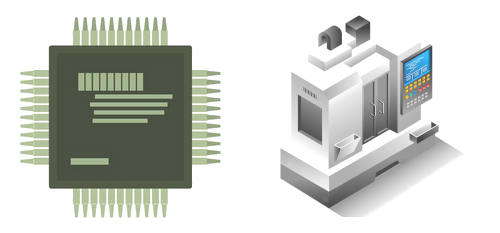 IT-Times
IT-Times
 Modernization of agriculture
Modernization of agriculture

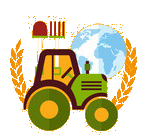 Agriculture, forestry, livestock, fishing
Agriculture, forestry, livestock, fishing
 *Modernization of agriculture
*Modernization of agriculture

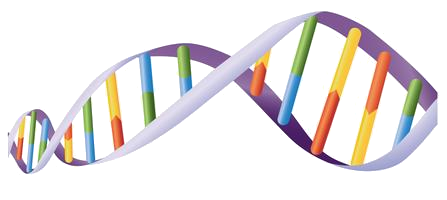 Science and technology
Science and technology

 Belgium
Belgium
 Bulgaria
Bulgaria
 Denmark
Denmark
 Germany
Germany
 Estonia
Estonia

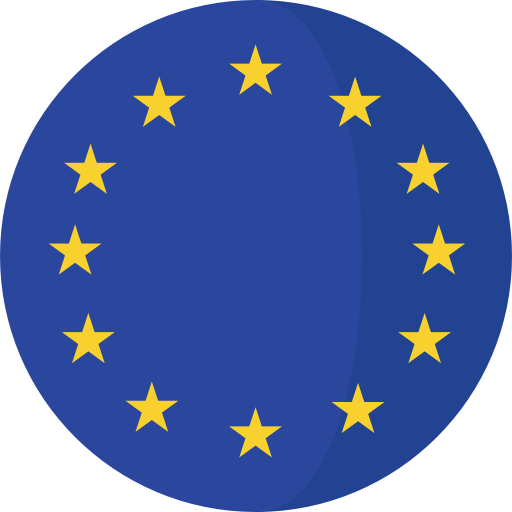 European Union
European Union
 Member States of the European Union
Member States of the European Union
 Finland
Finland
 France
France

 History
History

 History
History

 History
History
 N 2000 - 2100 AD
N 2000 - 2100 AD
 Greece
Greece

 Hand in Hand
Hand in Hand
 Ireland
Ireland
 Italy
Italy
 Croatia
Croatia
 Latvia
Latvia
 Lithuania
Lithuania
 Luxembourg
Luxembourg
 Malta
Malta
 Netherlands
Netherlands
 Nobel prize
Nobel prize
 Nobel Peace Prize
Nobel Peace Prize
 Nobel prize
Nobel prize
 2012
2012
 Austria
Austria

 Party and government
Party and government
 Group of the twenty most important industrial and emerging countries
Group of the twenty most important industrial and emerging countries

 Party and government
Party and government
 Group of Seven,G7
Group of Seven,G7
 Poland
Poland
 Portugal
Portugal
 Romania
Romania
 Sweden
Sweden
 Slovakia
Slovakia
 Slovenia
Slovenia
 Spain
Spain
 Czech Republic
Czech Republic
 Hungary
Hungary

 Economy and trade
Economy and trade
 Free trade agreement
Free trade agreement
 Cyprus
Cyprus
Die Europäische Union (EU) ist ein Verbund von derzeit 28 Mitgliedstaaten. Außerhalb von Europa umfasst die EU auch einige Überseegebiete. Sie hat insgesamt mehr als eine halbe Milliarde Einwohner. Gemessen am Bruttoinlandsprodukt ist der EU-Binnenmarkt der größte gemeinsame Wirtschaftsraum[7] der Erde. Die EU stellt eine eigenständige Rechtspersönlichkeit dar und hat daher Einsichts- und Rederecht bei den Vereinten Nationen.[8] Die verbreitetsten Sprachen in der EU sind Englisch, Deutsch und Französisch. Im Jahre 2012 wurde die Europäische Union mit dem Friedensnobelpreis ausgezeichnet.[9]
Das politische System der EU, das sich im Zuge der europäischen Integration herausgebildet hat, basiert auf dem Vertrag über die Europäische Union und dem Vertrag über die Arbeitsweise der Europäischen Union. Es enthält sowohl überstaatliche als auch zwischenstaatliche Elemente. Während im Europäischen Rat und im Rat der Europäischen Union die einzelnen Staaten mit ihren Regierungen vertreten sind, repräsentiert das Europäische Parlament bei der Rechtsetzung der EU unmittelbar die Unionsbürger. Die Europäische Kommission als Exekutivorgan und der EU-Gerichtshof als Rechtsprechungsinstanz sind ebenfalls überstaatliche Einrichtungen.
Die Anfänge der EU gehen auf die 1950er-Jahre zurück, als zunächst sechs Staaten die Europäische Wirtschaftsgemeinschaft (EWG) gründeten. Eine gezielte wirtschaftliche Verflechtung sollte militärische Konflikte für die Zukunft verhindern und durch den größeren Markt das Wirtschaftswachstum beschleunigen und damit den Wohlstand der Bürger steigern. Im Lauf der folgenden Jahrzehnte traten in mehreren Erweiterungsrunden weitere Staaten den Gemeinschaften (EG) bei. Ab 1985 wurden mit dem Schengener Übereinkommen die Binnengrenzen zwischen den Mitgliedsländern geöffnet. Nach dem Fall des Eisernen Vorhangs beziehungsweise der Auflösung des Ostblockes im Jahr 1989 änderte sich die geopolitische Lage in Europa grundlegend, womit sich Möglichkeiten zur Vertiefung der Integration, aber auch zur Vorbereitung von Erweiterungen im Osten ergaben. Mit dem Vertrag von Maastricht wurde 1992 die Europäische Union gegründet, die damit Zuständigkeiten in nichtwirtschaftlichen Politikbereichen bekam. In mehreren Reformverträgen, zuletzt im Vertrag von Lissabon, wurden die überstaatlichen Zuständigkeiten der EU ausgebaut und die demokratische Verankerung der politischen Entscheidungsprozesse auf Unionsebene nachgebessert, vor allem durch nochmalige Stärkung der Stellung des Europäischen Parlaments. Eine europäische Öffentlichkeit und Identität als Voraussetzung einer supranationalen Volkssouveränität bildet sich indes erst allmählich und nicht ohne Gegenströmungen heraus. Seit den 1980er-Jahren nahm mit den Kompetenzerweiterungen und dem damit einhergehenden Bedeutungsgewinn der EU auch die öffentliche Debatte über die Verfasstheit der EU an Intensität zu; dabei wurden auch EU-skeptische Positionen vermehrt artikuliert. Im Vertrag von Lissabon wurden im Jahr 2007 auch Austrittsszenarien geregelt.
Von den 28 EU-Staaten bilden 19 Staaten eine Wirtschafts- und Währungsunion. Im Jahr 2002 wurde eine gemeinsame Währung für diese Länder, der Euro, eingeführt. Im Rahmen des Raums der Freiheit, der Sicherheit und des Rechts arbeiten die EU-Mitgliedstaaten in der Innen- und Justizpolitik zusammen. Durch die gemeinsame Außen- und Sicherheitspolitik bemühen sie sich um ein gemeinsames Auftreten gegenüber Drittstaaten. Zukunftsbezogenes gemeinsames Handeln ist Gegenstand der Initiative Europa 2020, zu der unter anderem die Digitalpolitik gehört. Die Europäische Union hat Beobachterstatus in der G7, ist Mitglied in der G20 und vertritt ihre Mitgliedstaaten in der Welthandelsorganisation.
Die EU war 2016 der weltweit zweitgrößte Wirtschaftsraum nach nominalem (hinter den USA) sowie kaufkraftbereinigten Bruttoinlandsprodukt (hinter der Volksrepublik China). Als Staatenverbund ist sie der größte Güterproduzent und die größte Handelsmacht der Welt. Die Mitgliedsstaaten haben einen der höchsten Lebensstandards weltweit, wobei es jedoch auch innerhalb der EU deutliche Unterschiede zwischen einzelnen Ländern gibt. Im Index der menschlichen Entwicklung galten 2015 26 der 28 Mitgliedstaaten als „sehr hoch“ entwickelt.
Nach der Osterweiterung in den Jahren 2004 und 2007 ist die Europäische Union infolge der Finanzkrise ab 2007 und durch die Flüchtlingskrise ab 2015 in verschiedenen Mitgliedsstaaten einer zunehmenden EU-Skepsis von Teilen der Bevölkerung ausgesetzt, die sich unter anderem in dem Brexit-Referendum von 2016 niedergeschlagen hat. Unter dem Eindruck der Krisenerscheinungen und der Zunahme von rechtspopulistischen Tendenzen in den Mitgliedstaaten der Union wird die EU-Finalitätsdebatte neuerlich intensiv geführt. Einen auf die nähere Zukunft gerichteten, stark beachteten Reformplan hat der französische Staatspräsident Emmanuel Macron mit seiner Initiative für Europa vorgelegt.
欧洲联盟(英语:European Union;法语:Union européenne;德语:Europäische Union),简称欧盟(英语:EU;法语:UE;德语:EU),是根据1993年生效的《马斯特里赫特条约》(也称《欧洲联盟条约》)所建立的政治经济联盟,现拥有28个成员国,正式官方语言有24种。规范欧盟的条约经过多次修订,目前欧盟的运作方式依照《里斯本条约》。政治上所有成员国均为议会民主国家(2008年《经济学人》民主状态调查);经济上为仅次于以美国为首的北美自由贸易区的世界上第二大经济实体,德国、法国及意大利为欧盟三大核心成员国;军事上绝大多数欧盟成员国均为北大西洋公约组织成员。
欧盟的历史可追溯至1952年建立的欧洲煤钢共同体,当时只有六个成员国。1958年又成立了欧洲经济共同体和欧洲原子能共同体,1967年统合在欧洲各共同体之下,1993年又统合在欧洲联盟之下,欧盟已经渐渐地从贸易实体转变成经济和政治联盟。同时,欧洲经济共同体和后来的欧盟在1973年至2013年期间进行了八次扩大,成员国从6个增至28个。起初推动欧盟建立的动机,是渴望重建二战后损失惨重的欧洲,以及担忧欧洲会再度陷入战争泥潭。
欧盟的主要机构有欧洲委员会(成员国家首脑组成)、欧盟理事会(成员国家部长组成的欧盟的上议院)、欧盟委员会(欧盟的行政机构)、欧洲议会(欧盟的众议院,唯一的直接民选机构)、欧洲法院、欧洲中央银行等。此外,欧洲原子能共同体也在欧洲共同体的管辖范围之内,但在法律上是独立于欧盟的国际组织。
欧元由28个成员国中的19个采纳为流通货币;《申根条约》取消了部分成员国之间的边境管制,目前已有22个欧盟成员国和4个非成员国实施。
目前欧盟的主要议题有英国脱欧、欧盟的扩大、落实《里斯本条约》、全球暖化问题、非欧元区成员国加入欧元区、主权债务危机、移民危机等。
欧州連合(おうしゅうれんごう、英: European Union、略称:EU)は、マーストリヒト条約により設立されたヨーロッパの地域統合体。
欧州連合では欧州連合条約の発効前に調印されていた単一欧州議定書によって市場統合が実現し、またシェンゲン協定により域内での国境通過にかかる手続きなどの負担を大幅に削減した。さらに欧州連合条約発効後によって外交・安全保障分野と司法・内務分野での枠組みが新たに設けられ、ユーロの導入による通貨統合が進められている。このほかにも欧州議会の直接選挙が実施されたり、欧州連合基本権憲章が採択されたりするなど、欧州連合の市民の概念が具現化されつつある。加盟国数も欧州経済共同体設立を定めたローマ条約発効時の6か国から、2013年7月のクロアチア加盟により28か国にまで増えている。
The European Union (EU) is a political and economic union of 28 member states that are located primarily in Europe.[13] It has an area of 4,475,757 km2 (1,728,099 sq mi) and an estimated population of over 510 million. The EU has developed an internal single market through a standardised system of laws that apply in all member states in those matters (only) where members have agreed to act as one. EU policies aim to ensure the free movement of people, goods, services and capital within the internal market,[14] enact legislation in justice and home affairs and maintain common policies on trade,[15] agriculture,[16] fisheries and regional development.[17] For travel within the Schengen Area, passport controls have been abolished.[18] A monetary union was established in 1999 and came into full force in 2002 and is composed of 19 EU member states which use the euro currency.
The EU and European citizenship were established when the Maastricht Treaty was enacted in 1993.[19] The EU traces its origins to the European Coal and Steel Community (ECSC) and the European Economic Community (EEC), established, respectively, by the 1951 Treaty of Paris and 1957 Treaty of Rome. The original members of what came to be known as the European Communities were the Inner Six: Belgium, France, Italy, Luxembourg, the Netherlands, and West Germany. The Communities and its successors have grown in size by the accession of new member states and in power by the addition of policy areas to its remit. The latest major amendment to the constitutional basis of the EU, the Treaty of Lisbon, came into force in 2009. While no member state has left the EU or its predecessors, the United Kingdom signified an intention to leave after a membership referendum in June 2016 and is negotiating its withdrawal.
The European Union provides more foreign aid than any other economic union.[20] Covering 7.3% of the world population,[21] the EU in 2017 generated a nominal gross domestic product (GDP) of 19.670 trillion US dollars, constituting approximately 24.6% of global nominal GDP[22] and 16.5% when measured in terms of purchasing power parity.[23] Additionally, 27 out of 28 EU countries have a very high Human Development Index, according to the United Nations Development Programme. In 2012, the EU was awarded the Nobel Peace Prize.[24] Through the Common Foreign and Security Policy, the EU has developed a role in external relations and defence. The union maintains permanent diplomatic missions throughout the world and represents itself at the United Nations, the World Trade Organization, the G7 and the G20. Because of its global influence, the European Union has been described as an emerging superpower.[25]
L'Union européenne (UE)Note 4 est une association politico-économique sui generis de vingt-huit États européens qui délèguent ou transmettent par traité l’exercice de certaines compétences à des organes communautaires5,6. Elle s'étend sur un territoire de 4,5 millions de kilomètres carrés7, est peuplée de plus de 512 millions d'habitants3 et est la deuxième puissance économique mondiale en termes de PIB nominal derrière les États-Unis8,9,10. L’Union européenne est régie par le traité de Maastricht (TUE) et le traité de Rome (TFUE), dans leur version actuelle, depuis le 1er décembre 2009 et l'entrée en vigueur du traité de Lisbonne. Sa structure institutionnelle est en partie supranationale et en partie intergouvernementale : le Parlement européen est élu au suffrage universel direct, tandis que le Conseil européen et le Conseil de l'Union européenne (informellement le « Conseil des ministres ») sont composés de représentants des États membres. Le président de la Commission européenne est pour sa part élu par le Parlement sur proposition du Conseil européen. La Cour de justice de l'Union européenne est chargée de veiller à l'application du droit de l'Union européenne.
La déclaration du 9 mai 1950 de Robert Schuman, alors ministre français des Affaires étrangères, est considérée comme le texte fondateur de la construction européenne. Sous l’impulsion de personnalités politiques surnommées les « pères de l'Europe »11, comme Konrad Adenauer, Jean Monnet et Alcide De Gasperi, six États créent en 1951 la Communauté européenne du charbon et de l'acier. Après l’échec d'une Communauté européenne de défense en 1954, une Communauté économique européenne est instaurée en 1957 par le traité de Rome. La coopération économique est approfondie par l’Acte unique européen en 1986. En 1992, le traité de Maastricht prend la suite de l’Acte unique et institue une union politique qui prend le nom d’Union européenne et qui prévoit la création d'une union économique et monétaire dotée d’une monnaie unique : l’euro. Instituée en 1999, la zone euro compte dix-neuf États en 2017. De nouvelles réformes institutionnelles sont introduites en 1997 et en 2001. À la suite de l’échec d’un projet de constitution européenne après le refus par référendum des peuples français et néerlandais, les institutions sont à nouveau réformées en 2009 par le traité de Lisbonne pour y intégrer les mesures prévues par ce projet de constitution.
Depuis la formation de la CEE, le nombre d'États membres est passé de 6 à 28. Les membres fondateurs de la Communauté économique européenne, en 1957, sont l'AllemagneNote 5, la Belgique, la France, l'Italie, le Luxembourg et les Pays-Bas. Ils sont rejoints en 1973 par trois membres de l'Association européenne de libre-échange : le Danemark, l'Irlande et le Royaume-Uni. L'Union s'élargit vers le sud avec d'abord l'adhésion de la Grèce en 1981, puis celle de l'Espagne et du Portugal en 1986. Entretemps, en 1985, le Groenland a décidé de se retirer en ratifiant le Traité sur le Groenland et a désormais le statut de pays et territoire d'outre-mer associé. Avec la fin de la Guerre froide, la partie orientale de l'Allemagne rejoint la Communauté économique européenne en 1990Note 6. L'Union européenne intègre en 1995 des États neutres : l'Autriche, la Finlande et la Suède. En 2004, dix nouveaux États, en majorité issus du bloc de l'Est, s'ajoutent aux quinze déjà membres : Chypre, l'Estonie, la Hongrie, la Lettonie, la Lituanie, Malte, la Pologne, la Slovaquie, la Slovénie et République tchèque. Deux États supplémentaires, la Bulgarie et la Roumanie, complètent en 2007 ce cinquième élargissement, Enfin, en 2013, la Croatie rejoint l'Union12. Le 23 juin 2016, les citoyens britanniques votent en majorité pour la sortie du Royaume-Uni de l'Union européenne dans le cadre d'un référendum. La procédure de retrait est enclenchée le 29 mars 2017 par l'activation de l'article 50 du traité sur l'Union européenne.
Le 12 octobre 2012, le prix Nobel de la paix est attribué à l'Union européenne pour « sa contribution à la promotion de la paix, la réconciliation, la démocratie et les droits de l'Homme en Europe »13.
L'Unione europea (abbreviata in UE o Ue, pron. /ˈue/[12]) è un'organizzazione internazionale politica ed economica a carattere sovranazionale, che comprende 28 paesi membri indipendenti e democratici. La sua formazione risale al trattato di Roma del 25 marzo 1957, la denominazione attuale al trattato di Maastricht del 7 febbraio 1992 (entrato in vigore il 1º novembre 1993), e l'istituzione ufficiale al 2002 con l'avvento della valuta unica ed il successivo trattato di Lisbona, dopo un lungo percorso intrapreso dalle Comunità europee precedentemente esistenti e attraverso la stipulazione di numerosi trattati, che hanno contribuito al processo di integrazione europea.
Questa garantisce la libera circolazione di persone, merci, servizi e capitali all'interno del suo territorio attraverso un mercato europeo comune e la cittadinanza dell'Unione europea, promuove la pace, i valori e il benessere dei suoi popoli, lotta contro l'esclusione sociale e la discriminazione, favorisce il progresso scientifico e tecnologico e mira alla stabilità politica, alla crescita economica e alla coesione sociale e territoriale tra gli stati membri[13], cercando di attenuare le differenze socio-economiche tra i vari stati membri e incrementarne il benessere socio-economico.
Le competenze dell'Unione europea spaziano dalle politiche economiche (agricoltura e commercio) agli affari esteri, alla difesa e alla protezione ambientale, con una politica agraria comune, una politica estera comune e la presenza di fondi strutturali per il raggiungimento degli obiettivi socio-economici preposti. In alcuni di questi campi tali funzioni la rendono dunque simile a una federazione di stati (per es. per quanto riguarda gli affari monetari o le politiche ambientali), mentre in altri settori l'Unione è più vicina a una confederazione (mancando di una Costituzione, ordinamento giuridico, politica interna e politica industriale comuni) o a un'organizzazione politica sovranazionale (come per la politica estera).
Le politiche di unione economica e monetaria dell'Unione europea hanno portato nel 2002 all'introduzione di una moneta unica, l'euro, attualmente adottato da 19 stati dell'Unione, che formano la cosiddetta eurozona, con una politica monetaria comune regolata dalla Banca centrale europea (BCE).
Il 12 ottobre 2012 è stata insignita del premio Nobel per la pace, con la seguente motivazione: «per oltre sei decenni ha contribuito all'avanzamento della pace e della riconciliazione, della democrazia e dei diritti umani in Europa».[14]
La Unión Europea (UE) es una comunidad política de derecho constituida en régimen sui géneris de organización internacional nacida para propiciar y acoger la integración y gobernanza en común de los Estados y los pueblos de Europa. Está compuesta por veintiocho Estados europeos y fue establecida con la entrada en vigor del Tratado de la Unión Europea (TUE) el 1 de noviembre de 1993.6
Con ese acto, la supraestructura «Unión Europea» aunaba y se fundaba sobre las tres Comunidades Europeas preexistentes —la Comunidad Europea del Carbón y del Acero (CECA), la Comunidad Europea de la Energía Atómica (Euratom) y la Comunidad Económica Europea (CEE/CE)— y les añadía la política exterior común y la cooperación judicial y policial, formando un sistema complejo conocido como «los tres pilares». Sin embargo, con la entrada en vigor el 1 de diciembre de 2009 del Tratado de Lisboa, la Unión Europea sucedió, por completo aunque con ciertas particularidades, a las Comunidades Europeas y asumió con ello su personalidad jurídica única como sujeto de derecho internacional.7
La Unión Europea ha desarrollado un sistema jurídico y político, el comunitario europeo, único en el mundo, que se rige por mecanismos y procedimientos de funcionamiento interno complejos, que se han extendido y evolucionado a lo largo de su historia hasta conformar, en la actualidad, un sistema híbrido de gobierno transnacional difícilmente homologable que combina elementos próximos a la cooperación multilateral, si bien fuertemente estructurada e institucionalizada, con otros de vocación netamente supranacional, regidos ambos por una dinámica de integración regional muy acentuada.
Todo esto desemboca en una peculiarísima comunidad de Derecho, cuya naturaleza jurídica y política es muy discutida, si bien sus elementos fundacionales y su evolución histórica, todavía abierta, apuntan, en el presente, a una especial forma de moderna confederación o gobernanza supranacional, acusadamente institucionalizada y con una inspiración histórico-política de vocación federal —en el sentido de un federalismo internacional n
 Belgium
Belgium
 Denmark
Denmark
 Germany
Germany
 Estonia
Estonia
 Finland
Finland
 France
France

 History
History
 M 1500 - 2000 AD
M 1500 - 2000 AD

 History
History

 History
History
 N 2000 - 2100 AD
N 2000 - 2100 AD
 Greece
Greece

 Ile-de-France
Ile-de-France
 Ireland
Ireland
 Italy
Italy

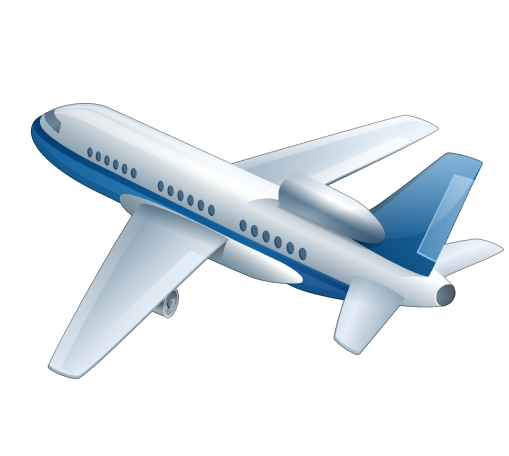
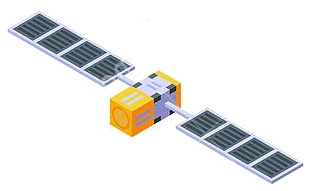
 Aerospace
Aerospace
 *ASI
*ASI



 Aerospace
Aerospace
 *CNES
*CNES



 Aerospace
Aerospace
 *DLR
*DLR



 Aerospace
Aerospace
 *NASA
*NASA



 Aerospace
Aerospace
 Missions to Mars
Missions to Mars



 Aerospace
Aerospace
 Artemis program
Artemis program
 Luxembourg
Luxembourg
 Netherlands
Netherlands
 Norwegen
Norwegen
 Austria
Austria
 Poland
Poland
 Portugal
Portugal
 Romania
Romania
 Sweden
Sweden
 Switzerland
Switzerland
 Spain
Spain
 Czech Republic
Czech Republic
 Hungary
Hungary
 United Kingdom
United Kingdom

 Science and technology
Science and technology
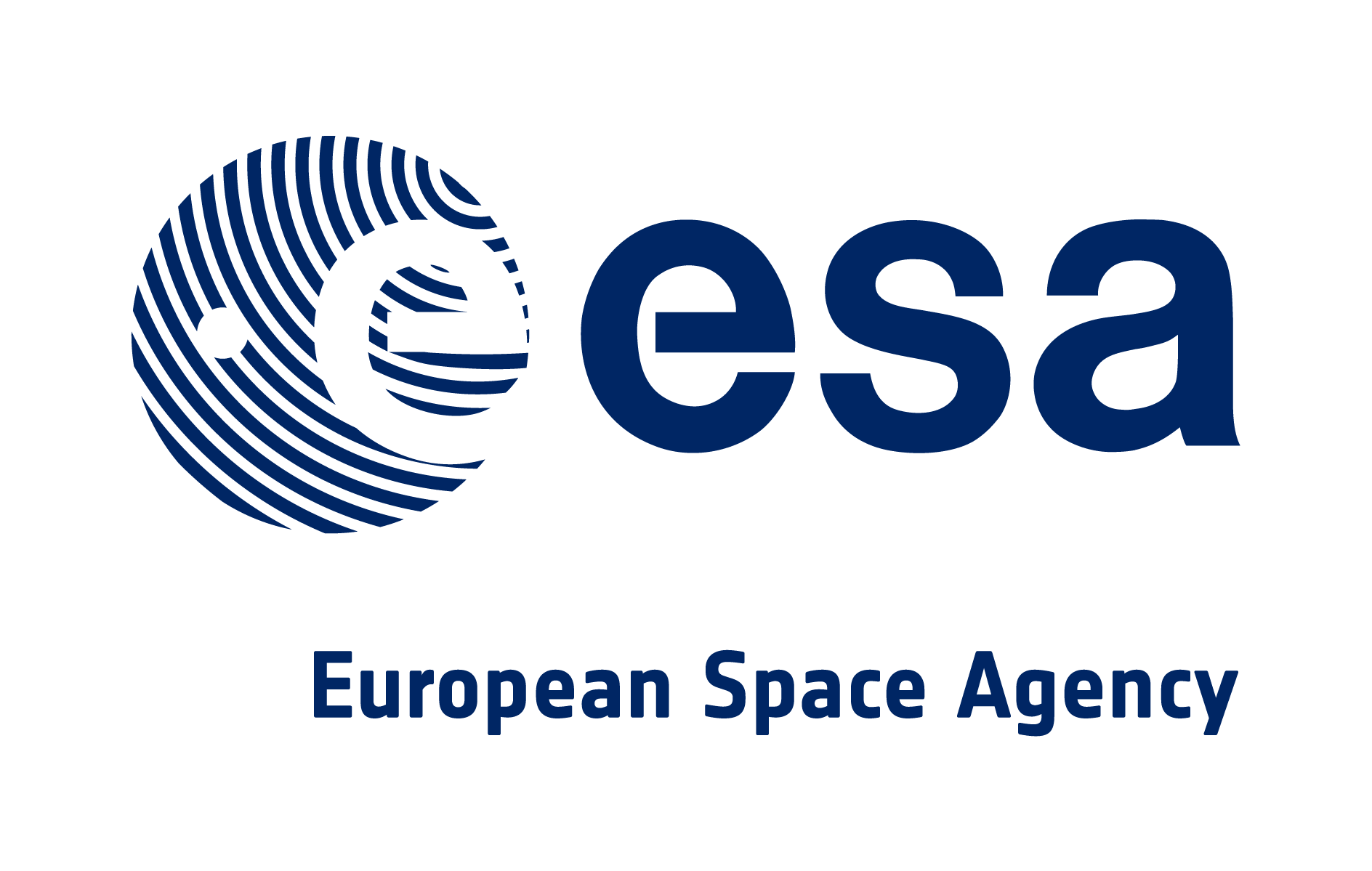
Die Europäische Weltraumorganisation, englisch European Space Agency (ESA), französisch Agence spatiale européenne (ASE), ist eine internationale Weltraumorganisation mit Sitz in Paris. Sie wurde am 30. Mai 1975 mit dem Übereinkommen zur Gründung einer Europäischen Weltraumorganisation mit Unterzeichnung unter das Abkommen durch die zunächst noch neun ursprünglichen Gründungsmitglieder in Paris gegründet.[3] Nach Hinterlegung der letzten Ratifikationsurkunde durch Frankreich trat am 30. Oktober 1980 gemäß Artikel XXI Absatz 1 des Übereinkommens die Gründung dann in Kraft.[3][4][5]
Die Gründung bezweckte eine bessere Koordinierung der europäischen Raumfahrtaktivitäten, um technologisch gegenüber den Raumfahrtnationen Sowjetunion und Vereinigte Staaten gleichberechtigt auftreten zu können. Sie hat 22 Mitgliedstaaten und beschäftigte 2017 etwa 2200 Mitarbeiter.[6]
Die ESA ist die Nachfolgeorganisation der europäischen ELDO, ESRO und der Europäischen Fernmeldesatelliten-Konferenz (CETS). Wie diese beschränkt sie sich gem. Art. II ihres Statuts in ihren europäischen Projekten zur Weltraumerforschung und -nutzung auf „ausschließlich friedliche Zwecke“.
Die Mehrzahl der EU-Staaten ist an der ESA beteiligt. Daneben engagieren sich dort auch die Schweiz und Norwegen. Die ESA kooperiert zunehmend mit der EU[7] sowie den nationalen Raumfahrtagenturen insbesondere Deutschlands und Frankreichs.[8]
Die ESA ist gemeinsam mit der NASA Gründungsmitglied des Consultative Committee for Space Data Systems (CCSDS).
欧洲航天局(欧空局)是在1975年由一个政府间会议设立的,目标是专门为和平目的提供和促进欧洲国在空间研究、空间技术和应用方面的合作。它的前身是欧洲航天研究组织和欧洲航天器发射装置研制组织。
欧空局有14个成员国:奥地利、比利时、丹麦、芬兰、法国、德国、爱尔兰、意大利、荷兰、挪威、西班牙、瑞典、瑞士、大不列颠及北爱尔兰联合王国。加拿大与欧空局订有一个密切合作的协定。
欧空局由各成员国代表组成的理事会领导,行政首长是总干事。欧空局1997年预算约为30亿埃居(35亿美元)。雇用的工作人员约为1,750人。
成员国必须参加强制性的科学和基础技术方案,但自行决定对地球观测、电信、空间运输系统、空间站和微重力方面的各个任选方案的贡献。
欧空局有下列机构:
(a)设在巴黎的总部,政治决定在此作出;
(b)设在荷兰诺德韦克的欧洲航天研究和技术中心,它是欧空局的主要技术机构,大多数项目小组以及空间科学部和技术研究和支助工程师在此工作。欧洲航天研究和技术中心还提供有关的试验设施;
(c)设在德国达姆施塔特的欧洲航天空间操作中心,它负责所有卫星操作以及相应的地面设施和通信网络;
(d)设在意大利弗拉斯卡蒂的欧洲航天研究所,它的主要任务是利用来自空间的地球观测数据;
(e)设在德国porz-Wahn的欧洲航天员中心,它协调所有欧洲航天员活动,包括未来欧洲航天员的培训。
欧空局还对设在库鲁的欧洲航天港圭亚那航天中心作出贡献。(Quelle:http://www.cnsa.gov.cn/n615708/n620174/n620669/n888645/67008.html)
欧洲空间局(法语:Agence spatiale européenne,缩写:ASE; 英语:European Space Agency,缩写:ESA)是由欧洲数国政府组成的的国际空间探测和开发组织,总部设在法国首都巴黎。欧洲空间局负责阿丽亚娜4号和阿丽亚娜5号火箭运载火箭的研制与开发。
欧洲空间局的前身,欧洲航天研究组织(European Space Research Organization,ESRO)经过1962年6月14日签署的一项协议,于1964年3月20日建立。如今它仍旧是ESA的一部分,称为欧洲空间研究与技术中心,位于荷兰诺德韦克。
ESA目前共有19个成员国:奥地利、比利时、捷克、丹麦、芬兰、法国、德国、希腊、爱尔兰、意大利、卢森堡、荷兰、挪威、葡萄牙、西班牙、瑞典、瑞士、罗马尼亚以及英国;另外,加拿大是ESA的准成员国(Associate Member)。法国是其主要贡献者(参见法国国家空间研究中心)。目前,ESA与欧盟没有关系。欧盟辖下另有欧盟卫星中心(European Union Satellite Centre)。
ESA共有约2200名工作人员。其2011年的预算约为40亿欧元。
ESA的航天发射中心位于南美洲北部大西洋海岸的法属圭亚那,占地约90600平方公里,属法国国家空间研究中心领导,主要负责科学卫星、应用卫星和探空火箭的发射以及与此有关的一些运载火箭的试验和发射。由于此地靠近赤道, 对火箭发射具有很大益处:纬度低,从发射点到入轨点的航程大大缩短,三子级不必二次启动;相同发射方位角的轨道倾角小,远地点变轨所需要的能量小,增加了 同步轨道的有效载荷;向北和向东的海面上有一个很宽的发射弧度;人口、交通、气象条件理想等。目前,航天中心有阿里安第一、第二、第三发射场,是欧洲航天 活动的主要基地。控制中心则位于德国的达姆施塔特。
欧州宇宙機関(おうしゅううちゅうきかん、仏: Agence spatiale européenne[1], ASE、英: European Space Agency, ESA)は、1975年5月30日にヨーロッパ各国が共同で設立した、宇宙開発・研究機関である。設立参加国は当初10か国、現在は19か国が参加し、2000人を超えるスタッフがいる。
本部はフランスに置かれ、その活動でもフランス国立宇宙センター (CNES) が重要な役割を果たし、ドイツ・イタリアがそれに次ぐ地位を占める。主な射場としてフランス領ギアナのギアナ宇宙センターを用いている。
人工衛星打上げロケットのアリアンシリーズを開発し、アリアンスペース社(商用打上げを実施)を通じて世界の民間衛星打ち上げ実績を述ばしている。2010年には契約残数ベースで過去に宇宙開発などで存在感を放ったソビエト連邦の後継国のロシア、スペースシャトル、デルタ、アトラスといった有力な打ち上げ手段を持つアメリカに匹敵するシェアを占めるにおよび[2]、2014年には受注数ベースで60%のシェアを占めるにいたった[3][4]。
ESA は欧州連合と密接な協力関係を有しているが、欧州連合の専門機関ではない。加盟各国の主権を制限する超国家機関ではなく、加盟国の裁量が大きい政府間機構として形成された。リスボン条約によって修正された欧州連合の機能に関する条約の第189条第3項では、「欧州連合は欧州宇宙機関とのあいだにあらゆる適切な関係を築く」と規定されている。
The European Space Agency (ESA; French: Agence spatiale européenne, ASE;[4][5] German: Europäische Weltraumorganisation) is an intergovernmental organisation of 22 member states[6] dedicated to the exploration of space. Established in 1975 and headquartered in Paris, France, ESA has a worldwide staff of about 2,000[7] and an annual budget of about €5.25 billion / US$5.77 billion (2016).[8]
ESA's space flight programme includes human spaceflight (mainly through participation in the International Space Station program); the launch and operation of unmanned exploration missions to other planets and the Moon; Earth observation, science and telecommunication; designing launch vehicles; and maintaining a major spaceport, the Guiana Space Centre at Kourou, French Guiana. The main European launch vehicle Ariane 5 is operated through Arianespace with ESA sharing in the costs of launching and further developing this launch vehicle. The agency is also working with NASA to manufacture the Orion Spacecraft service module, that will fly on the Space Launch System.[9][10]
The agency's facilities are distributed among the following centres:
- ESA science missions are based at ESTEC in Noordwijk, Netherlands;
- Earth Observation missions at ESA Centre for Earth Observation in Frascati, Italy;
- ESA Mission Control (ESOC) is in Darmstadt, Germany;
- the European Astronaut Centre (EAC) that trains astronauts for future missions is situated in Cologne, Germany;
- a research institute created in 2009, the European Centre for Space Applications and Telecommunications (ECSAT), is at Harwell, England;
- and the European Space Astronomy Centre (ESAC) is located in Villanueva de la Cañada, Madrid, Spain.
L’Agence Spatiale Européenne (ASE ; en anglais : European Space Agency et en allemand : Europäische Weltraumorganisation), le plus souvent désignée par son sigle anglophone ESA, est une agence spatiale intergouvernementale coordonnant les projets spatiaux menés en commun par une vingtaine de pays européens. L'agence spatiale, qui par son budget (5 750 millions d'euros en 2017) est la troisième agence spatiale dans le monde après la NASA et l'agence spatiale fédérale russe, a été fondée le 31 mai 1975. Les activités de l'agence couvrent l'ensemble du domaine spatial : les sciences avec l'astrophysique, l'exploration du Système solaire, l'étude du Soleil et la physique fondamentale ; l'étude et l'observation de la Terre avec des satellites spécialisés ; le développement de lanceurs ; les vols habités à travers sa participation à la Station spatiale internationale et à Orion ; la navigation par satellite avec le programme Galileo ; les télécommunications spatiales pour lesquelles l'agence finance la mise au point de nouveaux concepts ; la recherche dans le domaine des technologies spatiales. L'ESA participe également à des programmes spatiaux initiés par d'autres agences spatiales.
La stratégie est définie par un conseil dans lequel chaque pays membre dispose d'un représentant. Les programmes initiés par l'agence, qui représentent 75 % du budget, sont financés directement par les pays membres. Ceux-ci versent une contribution proportionnelle à leur PIB pour le financement de 20 % du budget (programme scientifique et frais généraux) et participent dans des proportions de leur choix aux programmes facultatifs. Le quart du budget est fourni par l'Union européenne et EUMETSAT pour le développement du segment spatial de ces programmes gérés par ces institutions (programme Galileo, satellites météorologiques, GMES/Copernicus). Certains des pays membres conservent, à côté de leur participation aux programmes européens, des programmes spatiaux purement nationaux.
L'agence spatiale européenne, qui a son siège à Paris, confie après sélection sur appel d'offres les travaux de recherche et le développement des engins spatiaux aux universités, instituts et industriels des pays membres en appliquant le principe du « retour géographique » : les dépenses de l'agence dans chaque pays sont au prorata de la contribution. L'agence emploie environ 2 233 personnes (2016) et dispose de plusieurs établissements spécialisés. Son centre principal est l'ESTEC aux Pays-Bas qui est dédié à la conception et aux tests des engins spatiaux. Les autres centres importants sont l'ESOC en Allemagne (suivi et contrôle des missions en cours) et l'ESTRACK (réseau mondial d'antennes paraboliques, pour assurer la liaison avec les engins spatiaux). L'ESA utilise aussi les installations du centre de lancement de Kourou, établissement du CNES pour le lancement de ses fusées.
L'Agenzia spaziale europea, ufficialmente denominata Agence spatiale européenne (dal francese; in acronimo ASE[2]) o, più frequentemente, European Space Agency (dall'inglese; in acronimo ESA), è un'agenzia internazionale fondata nel 1975 incaricata di coordinare i progetti spaziali di 22 Paesi europei[3]. Il suo quartier generale si trova a Parigi, in Francia[4], con uffici a Mosca, Bruxelles, Washington e Houston. Il personale dell'ESA del 2016 ammontava a 2 200 persone (esclusi sub-appaltatori e le agenzie nazionali) e il budget era di 5,25 miliardi di euro[5]. Attualmente il direttore generale dell'agenzia è Johann-Dietrich Woerner.
Lo spazioporto dell'ESA è il Centre Spatial Guyanais a Kourou,[6] nella Guyana francese, un sito scelto, come tutte le basi di lancio, per via della sua vicinanza con l'equatore. Durante gli ultimi anni il lanciatore Ariane 5 ha consentito all'ESA di raggiungere una posizione di primo piano nei lanci commerciali e l'ESA è il principale concorrente della NASA nell'esplorazione spaziale.
Le missioni scientifiche dell'ESA hanno le loro basi all'ESTEC di Noordwijk, nei Paesi Bassi.[7] Lo European Space Operations Centre (ESOC), di Darmstadt in Germania[8], è responsabile del controllo dei satelliti ESA in orbita. Le responsabilità dello European Space Research Institute (ESRIN) di Frascati, in Italia, includono la raccolta, l'archiviazione e la distribuzione di dati satellitari ai partner dell'ESA; oltre a ciò, la struttura agisce come centro di informazione tecnologica per l'intera agenzia[9]. Lo European Astronaut Centre (EAC) è situato a Colonia, in Germania[10], ed è un centro per la selezione, l'addestramento, il supporto medico degli astronauti, oltre al supporto per le preparazioni al lancio e durante le missioni. Infine lo European Space Astronomy Centre (ESAC), situata a Villanueva de la Cañada[11], è il centro ESA per la ricerca astronomica.
La Agencia Espacial Europea (en inglés: European Space Agency, en francés: Agence spatiale européenne; abreviada ESA por sus siglas inglesas y ASE2 por sus siglas francesas) es una organización internacional dedicada a la exploración espacial, con 22 Estados miembros.3 Fue constituida el 31 de mayo de 1975.4 Emplea a unas 2000 personas (excluyendo subcontratados)56 y tiene un presupuesto anual de 5600 millones de euros para el año 2018.1 La sede principal de la ESA está en París, Francia, aunque las estructuras de la ESA están muy descentralizadas.
ЕКА состоит из 22 постоянных членов, в некоторых проектах также принимает участие Канада.
Штаб-квартира Агентства находится в Париже. В Нордвейке (Нидерланды) расположен Европейский центр космических исследований и технологий. Европейский космический центр управления расположен в Дармштадте (Германия). В другом германском городе, Кёльне, расположен Европейский центр астронавтов. Центр наблюдения за Землёй и информационный центр Европейского космического агентства находятся во Фраскати под Римом (Италия). Для запусков создаваемых космических аппаратов используется космодром Куру во Французской Гвиане. ЕКА имеет контактные офисы в Бельгии, США и России и наземные станции слежения по всему миру.
В агентстве постоянно работает 1907 человек (2005), а его бюджет составляет более 4 миллиардов евро (2012).

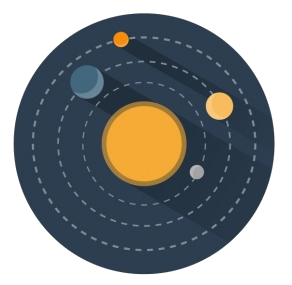 Astronomy
Astronomy

 History
History
 N 2000 - 2100 AD
N 2000 - 2100 AD



 Aerospace
Aerospace
 Spacecraft
Spacecraft



 Aerospace
Aerospace
 Space Telescope/Space Observatory
Space Telescope/Space Observatory



 Aerospace
Aerospace
 Solar Mission
Solar Mission

 Science and technology
Science and technology

Parker Solar Probe (vormals Solar Probe Plus) ist eine Raumsonde der NASA zur Erforschung der Sonne, insbesondere ihrer äußersten Atmosphärenschicht, der Korona. Die Raumsonde startete am 12. August 2018; sie soll am 24. Dezember 2024 erstmals ihren sonnennächsten Punkt (Perihel) erreichen.[3] Benannt wurde die Sonde nach dem US-amerikanischen Astrophysiker Eugene N. Parker, der den Begriff „solar wind“ (Sonnenwind) prägte.
派克太阳探测器(英语:Parker Solar Probe,缩写:PSP)又译帕克太阳探测器,简称派克号或帕克号,旧称太阳探测器(Solar Probe)或太阳探测器 +(Solar Probe Plus 或 Solar Probe+)[8],是NASA于2018年发射的无人航天器,其任务是反复的探测和观察太阳的外日冕[3][9][6]。它将在2025年最接近太阳,与太阳中心距离仅有9.86太阳半径(690万公里或430万英里)[10][11],届时的速度高达690,000 km/h(430,000 mph),或是光速的0.064%[10][12]。
这个项目在2009财政年度宣布,该项目的费用为15亿美元。由约翰·霍普金斯大学 应用物理实验室设计和制造的这艘航天器[13]于2018年8月12日发射[2]。它以芝加哥大学名誉教授,物理学家尤金·派克的名字命名,以表彰他对太阳物理学的贡献;这是NASA首次以在世人物的名字作为任务的正式名称[14]。


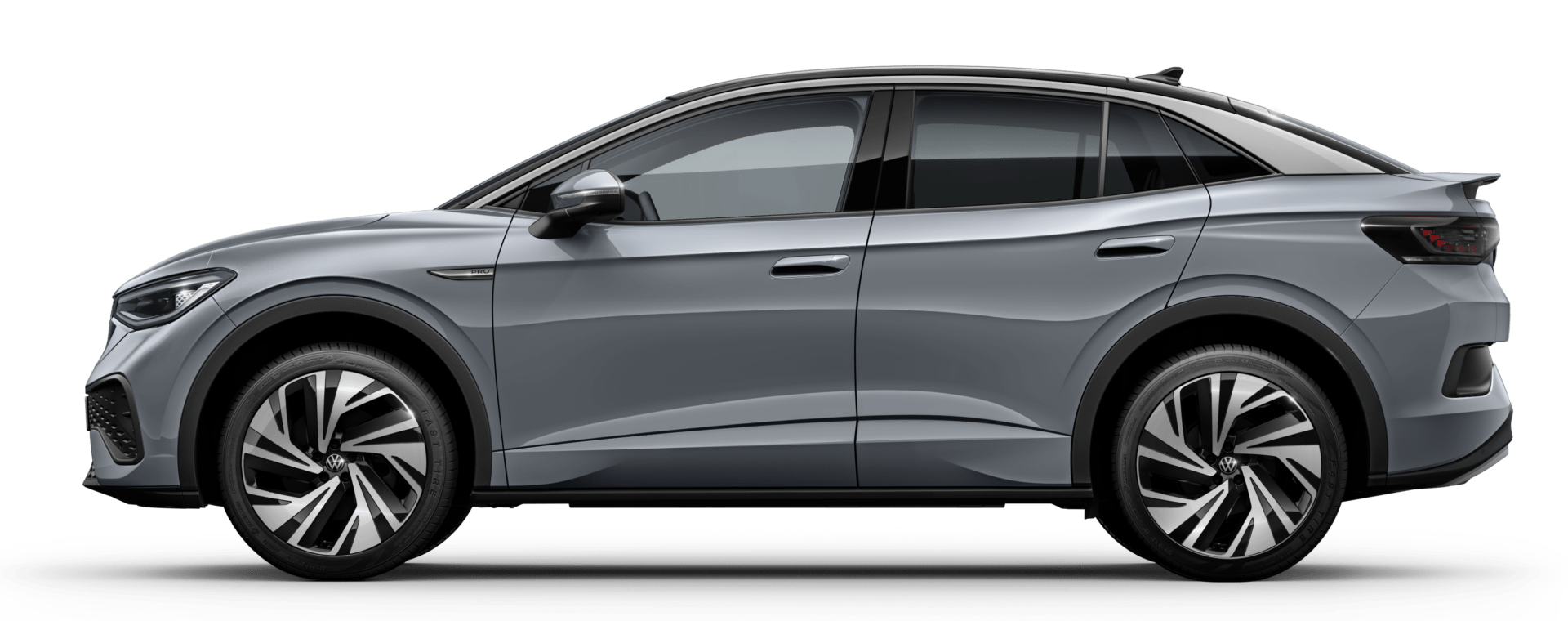
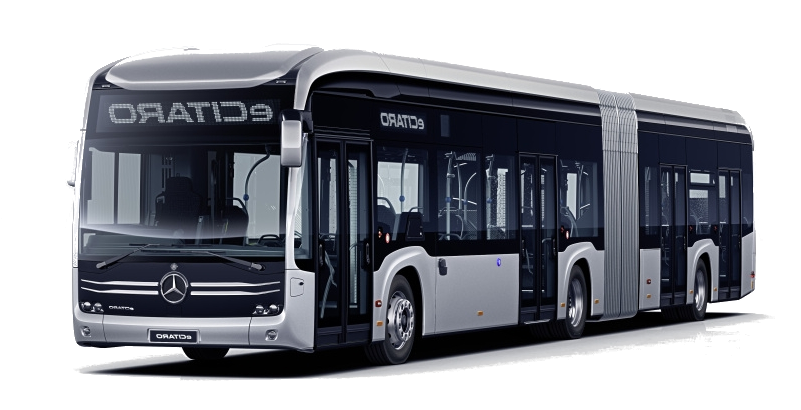
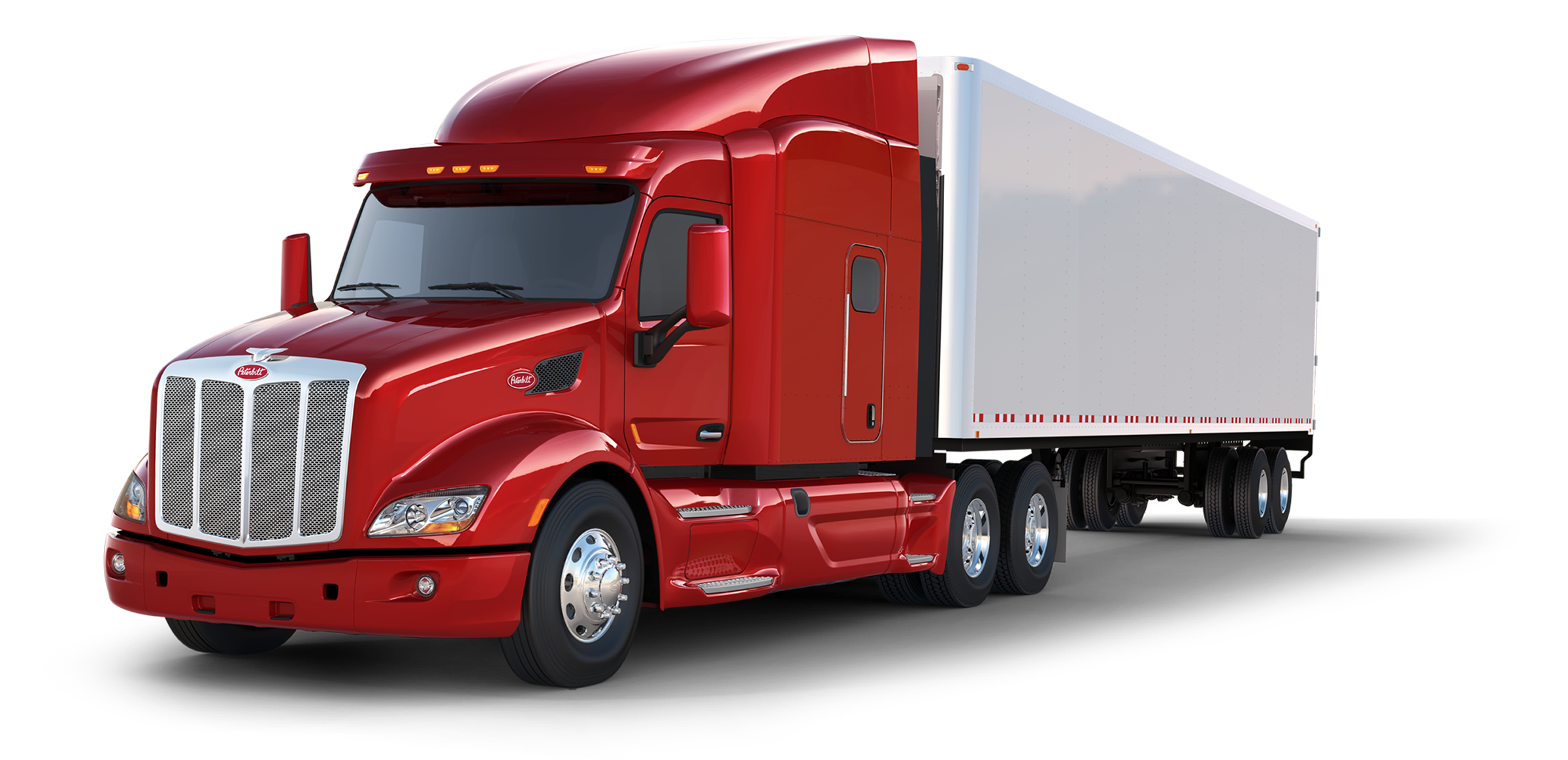 Automobile
Automobile
 ***Technology
***Technology

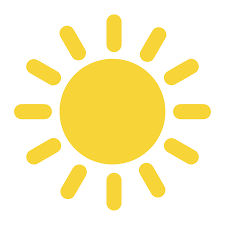 Energy resource
Energy resource

 European Union
European Union

 Financial
Financial
 *Brazil economic data
*Brazil economic data

 Financial
Financial
 *China economic data
*China economic data

 Financial
Financial
 *Germany economic data
*Germany economic data

 Financial
Financial
 *European Union economic data
*European Union economic data

 Financial
Financial
 *France economic data
*France economic data

 Financial
Financial
 *India economic data
*India economic data

 Financial
Financial
 *Indonesia economic data
*Indonesia economic data

 Financial
Financial
 *Italy economic data
*Italy economic data

 Financial
Financial
 *Japan economic data
*Japan economic data

 Financial
Financial
 *Canada economic data
*Canada economic data

 Financial
Financial
 *Russia economic data
*Russia economic data

 Financial
Financial
 *United States economic data
*United States economic data

 Financial
Financial
 *United Kingdom economic data
*United Kingdom economic data

 Climate
Climate



 Aerospace
Aerospace

 Party and government
Party and government

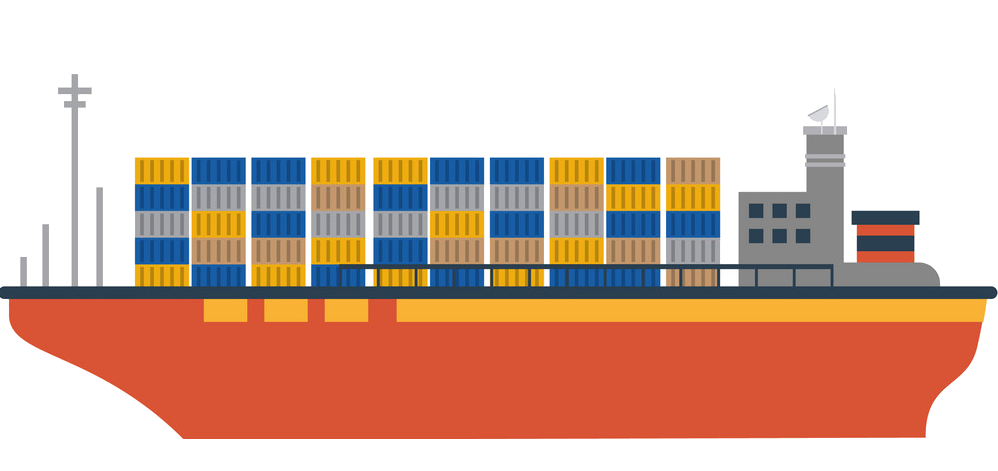 Ships and Nautics
Ships and Nautics




 Automobile
Automobile
 *Fuel cell vehicle
*Fuel cell vehicle



 Automobile
Automobile
 *Hydrogen propulsion
*Hydrogen propulsion

 Energy resource
Energy resource
 ***Hydrogen Energy
***Hydrogen Energy

 History
History
 N 2000 - 2100 AD
N 2000 - 2100 AD



 Aerospace
Aerospace

 Transport and traffic
Transport and traffic

 Science and technology
Science and technology
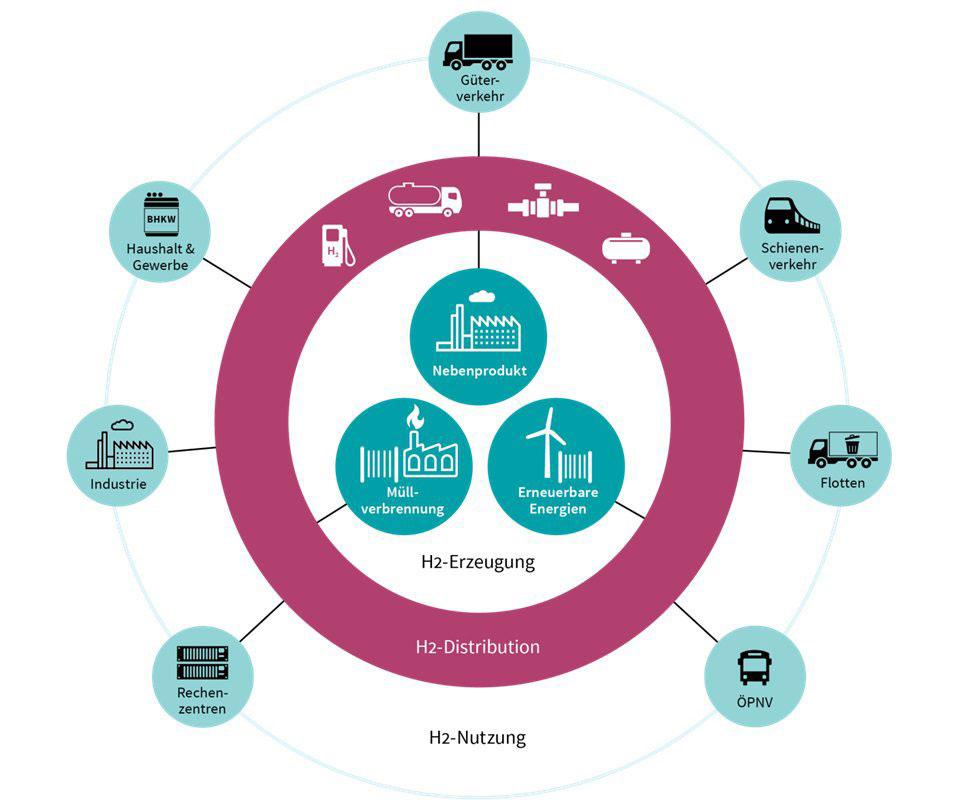
 German strategy for high-tech industries
German strategy for high-tech industries

 History
History

 History
History
 N 2000 - 2100 AD
N 2000 - 2100 AD


 IT-Times
IT-Times


 IT-Times
IT-Times
 Production Engineering/Manufacturing Technologies
Production Engineering/Manufacturing Technologies

 Science and technology
Science and technology

2023年11月,德国BMBF发布《人工智能行动计划》,该计划规划了11项具体行动领域。BMBF正在推动50项以人工智能研究、技术和基础设施发展为重点的现行措施,该计划将在此基础上新增20项额外的人工智能举措,并在本届政府任期内实现投入超过16亿欧元,助力德国在国家和欧洲层面促进人工智能的发展,从而推动欧盟与已经占据人工智能主导地位的国家竞争。

 Education and Research
Education and Research

 Education and Research
Education and Research
 *Important disciplines
*Important disciplines

 History
History
 N 2000 - 2100 AD
N 2000 - 2100 AD


 IT-Times
IT-Times
 Big Data
Big Data


 IT-Times
IT-Times
 Cloud Computing
Cloud Computing

 Important disciplines
Important disciplines

 Science and technology
Science and technology
 Technology concepts
Technology concepts

Künstliche Intelligenz (KI, auch artifizielle Intelligenz, AI, A. I., englisch artificial intelligence, AI) ist ein Teilgebiet der Informatik, welches sich mit der Automatisierung intelligenten Verhaltens befasst. Der Begriff ist insofern nicht eindeutig abgrenzbar, als es bereits an einer genauen Definition von Intelligenz mangelt. Dennoch wird er in Forschung und Entwicklung verwendet.
Im Allgemeinen bezeichnet künstliche Intelligenz oder KI den Versuch, eine menschenähnliche Intelligenz nachzubilden, d. h., einen Computer zu bauen oder so zu programmieren, dass er eigenständig Probleme bearbeiten kann. Oftmals wird damit aber auch, besonders bei Computerspielen, eine nachgeahmte Intelligenz bezeichnet, womit durch meist einfache Algorithmen ein intelligentes Verhalten simuliert werden soll.
人工智能(英语:Artificial Intelligence, AI)亦称机器智能,是指由人工制造出来的系统所表现出来的智能。通常人工智能是指通过普通电脑实现的智能。该词同时也指研究这样的智能系统是否能够实现,以及如何实现的科学领域。
一般教材中的定义领域是“智能主体(intelligent agent)的研究与设计”[1],智能主体是指一个可以观察周遭环境并作出行动以达致目标的系统。[2]约翰·麦卡锡于1955年的定义是[3]“制造智能机器的科学与工程。”[4]
人工智能的研究是高度技术性和专业的,各分支领域都是深入且各不相通的,因而涉及范围极广。[5]
人工智能的研究可以分为几个技术问题。其分支领域主要集中在解决具体问题,其中之一是,如何使用各种不同的工具完成特定的应用程序。AI的核心问题包括推理、知识、规划、学习、交流、感知、移动和操作物体的能力等。[6]强人工智能目前仍然是该领域的长远目标。[7]目前比较流行的方法包括统计方法,计算智能和传统意义的AI。目前有大量的工具应用了人工智能,其中包括搜索和数学优化、逻辑推演。而基于仿生学、认知心理学,以及基于概率论和经济学的算法等等也在逐步探索当中。

